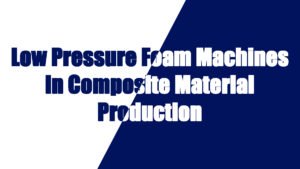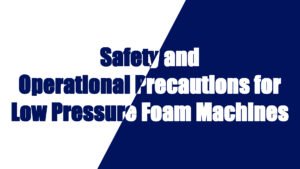As a high-performance synthetic material, polyurethane (PU) has been widely used in the construction industry due to its excellent physical properties (such as good thermal insulation, light weight, durability and processability). With the increasing demand for energy-saving, environmental protection, comfort and green building materials in the construction industry, polyurethane has a very broad application prospect in the construction industry, especially in thermal insulation, heat preservation, flooring, wall, roof and sealing materials.
According to a report from a market research agency, the application of polyurethane in the construction industry is gradually increasing, especially in insulation and green building materials. The global market size of polyurethane in the construction industry is about US$15 billion in 2023, and it is expected to reach US$22 billion by 2028, with an average annual growth rate of 6%-7%.
Polyurethane vs. Other Building Materials
In order to have a more comprehensive understanding of the market position of polyurethane in the construction industry, we can compare polyurethane with other common building materials (such as polystyrene (EPS), rock wool, glass wool, etc.) and analyze their advantages and disadvantages.
Comparison between polyurethane and polystyrene (EPS)
Polystyrene foam (EPS) is one of the common insulation materials in the construction industry. Its market price is relatively low, but there is still a certain gap in performance compared with polyurethane.
Performance indicators | PU | EPS |
Thermal conductivity | 0.022-0.027 W/m·K | 0.035-0.045 W/m·K |
Gewicht | Light (lighter) | Light (lighter) |
Compressive strength | Higher (better than EPS) | Lower (poorer) |
Water resistance | Excellent | Poor |
Anti-aging performance | Excellent | Poor |
Environmental protection | Recyclable, low VOC | Recyclable, some contain chemical additives |
- Vorteile:
- Polyurethan:it has lower thermal conductivity (better thermal insulation performance) than EPS, suitable for higher insulation requirements, and has better anti-aging performance and water resistance.
- Polystyrene:relatively cheap, widely used in low-cost building insulation projects, suitable for simple insulation needs.
Comparison Between Polyurethane and Rock Wool
Rock wool is a commonly used thermal insulation material in the construction industry, especially in places with high fire protection requirements. It performs well in fire protection, but its thermal insulation performance and construction convenience are slightly inferior to polyurethane.
Performance indicators | PU | Rock Wool |
Thermal conductivity | 0.022-0.027 W/m·K | 0.035-0.045 W/m·K |
Compressive strength | Higher (better than rock wool) | Lower (poor) |
Fire resistance | Not fireproof (but fire retardant can be added) | Excellent (high temperature resistant) |
Water absorption rate | Lower (better than rock wool) | High, strong water absorption |
Gewicht | Light | Heavy |
Environmental protection | Recyclable, low VOC | Recyclable, but contains asbestos components (may have an impact on health) |
- Vorteile:
- Polyurethan:has better thermal insulation performance than rock wool, light weight, high compressive strength, suitable for buildings with high insulation requirements.
- Steinwolle:It has excellent fire resistance and is suitable for construction projects with strict fire protection requirements, especially high-rise buildings and industrial buildings.
Comparison Between Polyurethane and Glass Wool
Glass wool is another commonly used insulation material with good thermal insulation and fire resistance, but it is easy to absorb water in a humid environment, affecting its performance.
Performance indicators | PU | Glass Wool |
Thermal conductivity | 0.022-0.027 W/m·K | 0.035-0.045 W/m·K |
Compressive strength | Higher (better than glass wool) | Lower (poorer) |
Fire resistance | Not fireproof (but fire retardant can be added) | Good (excellent fire resistance) |
Water absorption rate | Low (better) | High, easy to absorb water |
Gewicht | Light | Heavier |
Environmental protection | Recyclable, low VOC | Recyclable, but contains silicon components |
- Vorteile:
- Polyurethan:has lower thermal conductivity, excellent insulation effect, and more stable performance in a humid environment, suitable for construction projects that require efficient insulation.
- Glaswolle:Good fire resistance, suitable for occasions that require fire protection, and relatively cheap, but moisture problems may affect its long-term performance.
Conclusion
Last Blog: Polyurethane: Essential in Construction



































